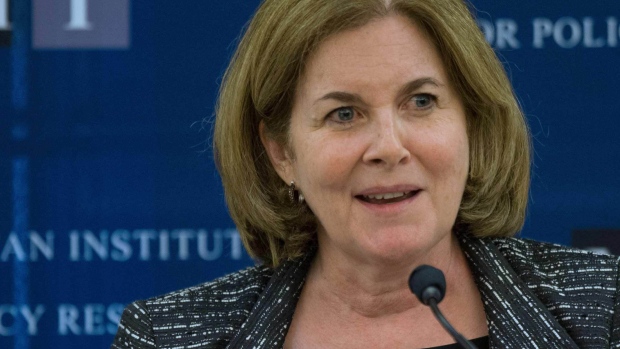Feb 13, 2019
Fed Officials’ Views on the Economy Have Converged: It's in a Good Place
, Bloomberg News

(Bloomberg) -- Federal Reserve officials are getting their stories straight on the U.S. economy.
Cleveland’s Loretta Mester says it’s in a “very good spot.” Or a “pretty good place,” as Kansas City’s Esther George has it, faithfully echoing Chairman Jerome Powell’s “the economy is good.”
Their remarks, made Wednesday and late Tuesday, aim to reassure America that it can be confident in the economy and the central bank’s commitment to keeping it on track. It’s a message that has helped calm anxious investors and short-circuit a potentially self-reinforcing Wall Street sell-off that gripped markets late last year.
Policy makers in January backed away from raising interest rates while they assess how headwinds from a cooling global economy and tighter financial conditions affect their otherwise constructive outlook for continuing solid U.S. growth.
That pivot from a stance in December, where their forecasts showed two hikes in 2019, has eased expectations of further moves -- and the accompanying risk that the Fed craters the economy by tightening monetary policy too much.
Investors now see the central bank keeping rates on hold through 2019 with a possible cut next year, and officials are taking great care not to disturb that assessment, at least for now.
“We have adopted a wait-and-see approach regarding future rate adjustments,” Mester said in Lexington, Kentucky. “I believe that policy, for the time being, is well-calibrated to the economic outlook and the risks around that outlook.”
While policy makers have signaled their next move could be up or down, their working assumption is that growth will be sufficiently strong to warrant rates going a bit higher -- just not any time soon.
“I have one increase for 2019, if everything performs as we expect it,” said Atlanta Fed chief Raphael Bostic during a forum in Dublin. “We expect the economy to perform not as strongly as 2018, but stronger than its long-run trend.”
U.S. growth was relatively strong in 2018 -- an estimated 2.9 percent according to economists surveyed by Bloomberg -- but is expected to moderate this year as the global economy cools and as the stimulus from U.S. tax cuts and government spending increases fade. Still, the labor market remains robust with unemployment of 4 percent near the lowest levels since the 1960s.
The central bank raised borrowing costs four times last year and the target range for its benchmark policy rate of 2.25 percent to 2.5 percent has now reached the range that policy makers estimate to be neutral that neither spurs nor slows growth.
“If the economy performs along the lines that I’ve outlined as most likely, the fed funds rate may need to move a bit higher,” Mester said. “But if some of the downside risks to the forecast manifest themselves, and the economy turns out to be weaker than expected and jeopardizes our dual mandate goals, I will need to adjust my outlook and policy views.”
To contact the reporters on this story: Christopher Condon in Lexington, Kentucky at ccondon4@bloomberg.net;Dara Doyle in Dublin at ddoyle1@bloomberg.net
To contact the editors responsible for this story: Brendan Murray at brmurray@bloomberg.net, Alister Bull, Scott Lanman
©2019 Bloomberg L.P.